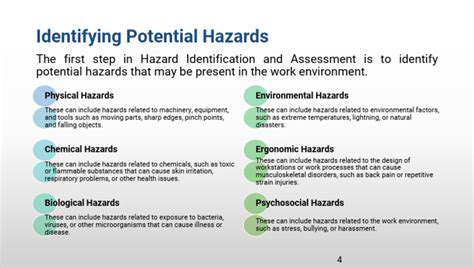Dealing with Destructive Cat Behavior
Training and Positive Reinforcement Techniques
Understanding Destructive Behaviors
Cats exhibit destructive behaviors for a variety of reasons, often stemming from unmet needs or underlying anxieties. Identifying the root cause is crucial before implementing any training techniques. This might involve environmental stressors, lack of stimulation, medical issues, or even a change in the household dynamic. Understanding these potential triggers is the first step towards finding effective solutions and preventing future incidents.
Sometimes, destructive scratching or biting can be a sign of feline frustration or boredom. A cat who feels confined or lacks opportunities for play and exploration might resort to these behaviors to express their discomfort or seek attention. Recognizing these underlying motivations is key to creating a more enriching environment for your feline companion.
Positive Reinforcement: The Core Principle
Positive reinforcement training techniques focus on rewarding desired behaviors rather than punishing undesired ones. This approach fosters a positive association between the cat and the desired actions, making learning more enjoyable and less stressful for the animal. Instead of reprimanding a cat for scratching the furniture, we should redirect their attention towards appropriate scratching posts.
Rewards can be varied, ranging from delicious treats to engaging playtime. The key is to consistently reward the desired behavior immediately after it occurs, ensuring the cat understands the connection between the action and the reward. This positive reinforcement strengthens the desired behavior and minimizes the likelihood of destructive behaviors recurring.
Identifying and Addressing Underlying Issues
Addressing potential underlying issues is crucial for long-term success in managing destructive cat behaviors. A cat displaying scratching or biting may have underlying anxieties, such as fear of a new family member, a change in the household, or even an uncomfortable environment. Identifying the source of the stressor allows you to address it directly or create a more comfortable environment for your feline friend.
Medical conditions can also contribute to destructive behaviors. If you suspect a health problem, consulting a veterinarian is essential to rule out any medical causes and receive appropriate treatment. Early diagnosis and intervention can make a significant difference in managing the underlying condition and improving your cat's overall well-being.
Providing Sufficient Stimulation and Enrichment
Cats are naturally curious and active animals. Providing ample opportunities for physical and mental stimulation can deter destructive behaviors by keeping them engaged and entertained. Interactive toys, climbing structures, and puzzle feeders can help satisfy their natural instincts and prevent boredom from leading to unwanted behaviors.
Rotating toys and activities regularly can keep the cat interested and prevent them from becoming overly reliant on any one toy. This helps to maintain their curiosity and prevent them from focusing their energy on destructive behaviors as a form of entertainment.
Redirecting Destructive Behaviors
Redirecting a cat's behavior involves gently guiding them towards more appropriate alternatives. If a cat is scratching furniture, provide them with a scratching post or pad that is attractive and appealing, placing it strategically near where they are scratching the furniture. Offering a scratching post that matches their preferences can often solve this issue.
Creating a Safe and Stimulating Environment
A cat's environment plays a significant role in their behavior. Ensuring a safe and stimulating space can reduce the likelihood of destructive behaviors by addressing their needs for security, exploration, and play. This includes providing hiding places, climbing structures, and interactive toys to keep your cat engaged and happy.
Minimizing stressors in their environment, like loud noises or sudden movements, is also crucial. Creating a calm and predictable environment will reduce anxiety and promote healthier behaviors.
Read more about Dealing with Destructive Cat Behavior
Hot Recommendations
- Customized Sleep Schedules: AI Driven for Sustainable Rest
- Crafting a Personalized Productivity Plan for Mental Clarity
- Sustainable Self Compassion: Cultivating Kindness Towards Your Mind
- Sustainable Productivity Hacks for the Busy Professional
- Sustainable Wellness for Parents: Balancing Family and Self Care
- Data Informed Self Care: Designing Your Personalized Wellness Strategy
- Sustainable Wellness for a Purpose Driven Life
- AI Assisted Mindfulness: Personalized Meditations for Deeper Practice
- Building Inclusive Mental Health Services: Key Initiatives
- AI Powered Self Care: Customizing Your Routine for Maximum Impact











